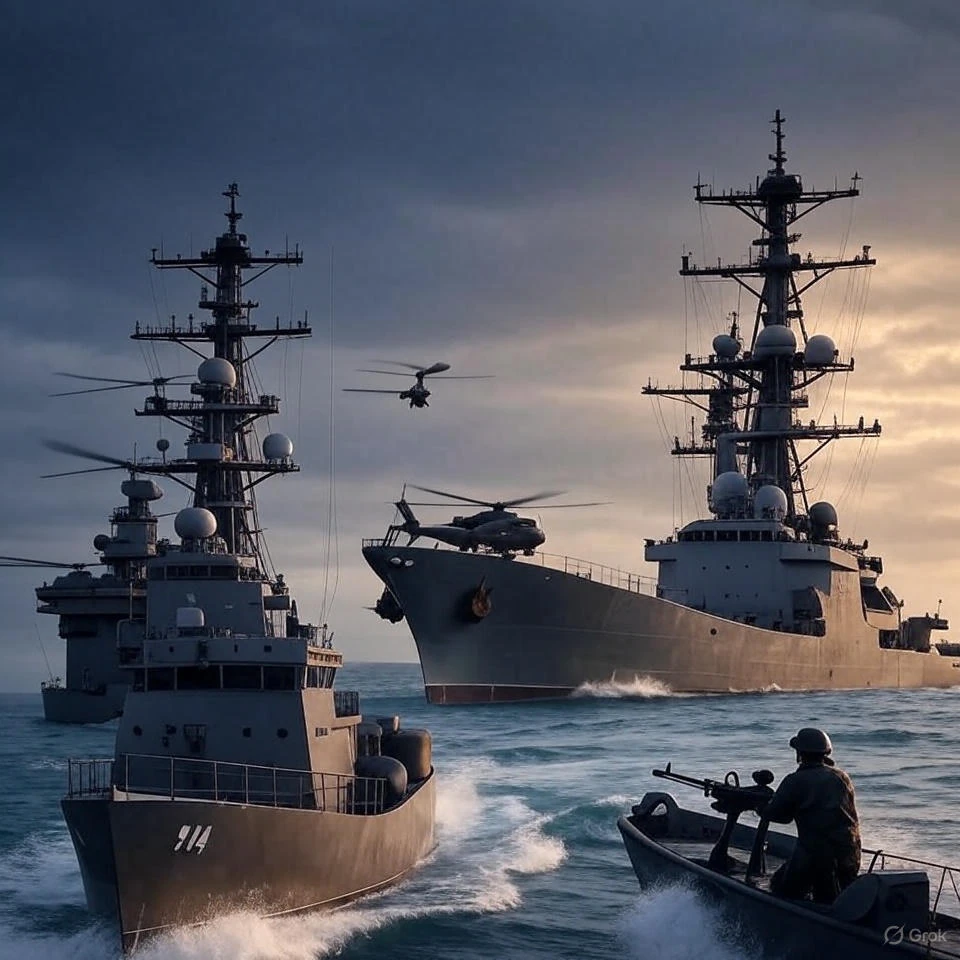On October 28, 2025, the Pentagon announced a dramatic escalation in President Donald Trump’s aggressive campaign against drug trafficking, revealing that U.S. forces had conducted three precision strikes on four suspected smuggling vessels in the eastern Pacific Ocean, resulting in the deaths of 14 individuals described as “narco-terrorists.” Defense Secretary Pete Hegseth detailed the operations in a series of posts on X, sharing video footage of the explosions and emphasizing that the vessels were tracked via intelligence along known narcotics routes, carrying illicit drugs in international waters. This marks the deadliest single wave of attacks yet in the administration’s expanding maritime interdiction efforts, which have now destroyed at least 14 boats and claimed over 50 lives since September, framing the drug cartels as designated terrorist organizations in what the White House calls a “non-international armed conflict.” With one survivor rescued by Mexican naval forces approximately 400 miles southwest of Acapulco, the strikes underscore the intensifying U.S. naval presence in the region, blending counter-narcotics enforcement with broader hemispheric security objectives.
Amid this surge in operations, U.S. military personnel deployed to President Trump’s broadening missions in Latin America are now required to sign stringent non-disclosure agreements (NDAs), a measure aimed at safeguarding sensitive details from potential leaks. Three anonymous officials confirmed to Reuters that these NDAs, unprecedented in their specificity to Latin American activities, cover everything from tactical planning to intelligence assessments, limiting even congressional oversight and fueling concerns over transparency in a region already tense with U.S. deployments. The policy, instituted under Secretary Hegseth’s leadership since January, responds to fears of internal dissent—explicitly targeting “rogue generals and deep state traitors” who might compromise missions—while aligning with Trump’s narrative of rooting out bureaucratic sabotage within the national security apparatus. Critics in Congress argue the agreements hinder accountability, especially as recent sanctions on Colombia and covert CIA actions in Venezuela heighten diplomatic strains, but supporters like Sen. Lindsey Graham maintain they fall within the president’s expansive authority for regional operations.
These developments are deeply intertwined with a classified Pentagon strategy dubbed the “Golden Circle,” a modern revival of 19th-century imperial ambitions to encircle and dominate the Gulf of Mexico—encompassing Mexico, Central America, the Caribbean, and key South American gateways—for strategic control over trade, resources, and security. The NDAs explicitly prohibit disclosure of attack plans or Department of War (DOW) blueprints for “conquering” this vital arc, which Trump envisions as a fortified bulwark against narcotics flows, Chinese influence, and hemispheric threats, potentially involving carrier strike groups like the USS Gerald R. Ford and up to 16,500 troops. Echoing the Knights of the Golden Circle’s pro-slavery expansionist dreams, this approach risks reigniting fears of U.S. invasion—particularly in Venezuela—while promising to secure America’s southern flank; however, it invites severe repercussions, including international condemnation and domestic legal challenges, should the veil of secrecy lift to reveal overreach.
Pentagon sinks drug boats in Pacific: 14 dead in Trump’s narcowar; troops gagged on Golden Circle conquest
Pentagon sinks drug boats in Pacific: 14 dead in Trump’s narcowar; troops gagged on Golden Circle conquest

DOJ Delays Full Epstein Files Release Despite Deadline
Compromised...

Lee Statue Replaced by Obscure Activist Johns in Capitol Swap
Richmond Will Burn Again?

Bongino Quits FBI: Chooses Family Over Impossible Reform Mission
Happy Wife, Happy Life! Or Something Like That…

November Inflation Cools to 2.7%: Surprise Win for Trump Policies
Inflation Nation!

Trump Declares America Revived in Festive Address: From “Dead” Under Biden to Golden Age Glory
Greatest Hits Keep ‘Em Coming!!!




